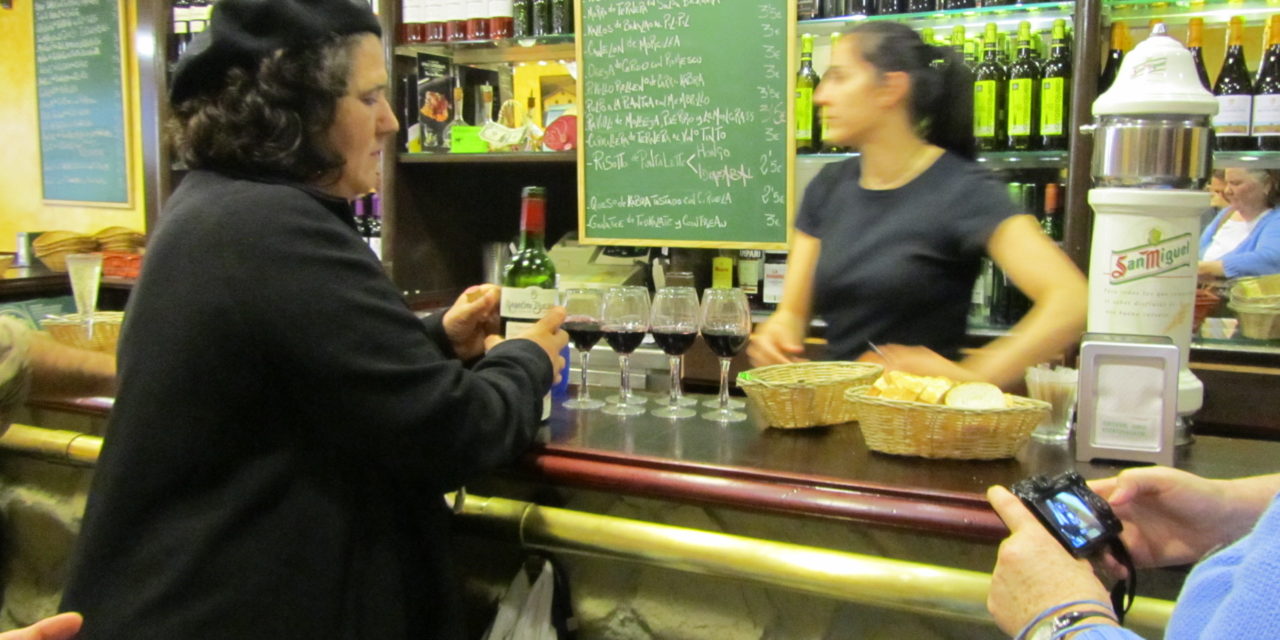Enjoying food and wine seems to be a national pastime in Spain, and it’s one of the reasons why you’ll enjoy visiting there. If you’re organizing a business event or if you’re looking to sample on your own, you’ll definitely want to keep some of these travel tips in mind if you’re looking to drink you way through Spain.
Spanish Wine
The first time I traveled through Spain, the green beauty of the vineyards that line some of the highways and countryside caught my attention. Wine is Spain’s most recognizable beverage and one of the country’s biggest exports. Spain has roughly three million acres of vines throughout the country, and it’s the world’s third largest wine producer after France and Italy. Spaniards themselves consumed 22 liters of wine a year per capita in 2011. Wine production began in Spain during the pre-Roman times, and it’s an integral part of the Spanish culture today.
Spanish wine is a very broad term that includes the various regions produce different varieties of wine. Wine is produced in nearly every Spanish region but there are differences in the taste and consistency. La Rioja is one of Spain’s most well-known regions, producing both simple and complex hearty red, rose and white wines. And endless miles of vineyards dominate La Rioja’s scenic landscape.
Most Spanish cava is produced in the Penedes region of Catalonia (other places such as Extremadura and La Rioja also produce cava). Cava is a sparkling wine that has a similar taste and consistency to champagne. Southwestern towns such as Jerez produce world famous sherry, which is a fortified wine similar to a brandy.
In the Basque region, you’ll find txakoli, a slightly sparkling dry white wine that’s served as an aperitif. It is young wine (one year old), and you are meant to drink it right away.
Spanish wine has different classifications based on age:
- Crianza – generally less than one to two years
- Reserva – aging between one in a half and three years
- Gran Reserva – denotes between four to five years of aging.
Cost: A quality bottle of Spanish wine that you will enjoy is generally inexpensive and can range anywhere from less than 5 euros to 30 euros depending on the ranking and make. (To be sure, higher level quality Spanish wines can cost much more.)
Sherry
“The key thing about sherry is that it’s the only major type of wine that is prematurely oxidized,” explains Ken Winn, a certified wine educator (CWE) from Chicago. “It’s the only wine type in the world where this is done.”
Sherry is made from the palomino grape, which is grown in chalky white soil in Andalusia (southern Spain).
There are two types of sherry: dry and sweet. Sherry is popular throughout Spain, and most Spaniards prefer a dry sherry – a fino (typically aged about five years and is lighter in color), or a palo cortado or amontillado (aged typically up to 10 years and is darker, and richer in taste), Americans tend to enjoy a sweet sherry. The grapes used for sweetening sherry are muscatel and Pedro Ximenez.
While you can enjoy a sherry any time of the day, a dry sherry is typically served as an aperitif and a sweet sherry is typically served after a meal. “For food pairing, if they grow together, they go together,” Winn says. In Andalusia, you’ll find fried foods, olives, jamon (ham) and seafood.
Cost: Sherry is generally cost effective, costing about 10 euros per bottle.
Spanish Sangria
Sangria is recognized internationally, and it’s popularity has been associated with Spain’s hot and dry summer climate. While Sangria may trace its roots to Spain, Spaniards tend to prefer bottled wine because of its cost effectiveness and quality vs. a sangria.
An interesting fact is that there is no standard recipe for sangria. But the best sangria involves allowing an assortment of fruits to ferment in red wine for a period of time (sometimes white wine is used in place of red). Sangria isn’t carbonated, and it’s generally mild in proof although that can depend on the addition of spirits in its recipe. And the taste will vary based on which ingredients are added.
Sangria is available at almost any bar or restaurant throughout Spain. The drink is generally homemade and pairs excellent with dinner. There is even bottled sangria which is labeled as an “aromatized wine,” although I find that the bottled sangria doesn’t taste nearly as delicious as homemade.
Cost: Sangria is generally an inexpensive drink, as I even found it for as little as one euro a glass in a restaurant.
Pacharan
Pacharan (spelled as Patxaran in Basque) is one of Spain’s most recognizable liquors because of its sweet taste, red color and heavy consistency. It is one of Spain’s oldest drinks and came about during the Dark Ages – originating from the countryside of Navarre and the Basque Country (northern Spain).
Pacharan is made from a mixture of fermented sloe berry from blackthorn shrub (wild plums with a bitter taste, so you can’t eat these raw), anisette (tastes like licorice) and coffee beans. Pacharan is generally 50 to 60 proof. Pacharan is so treasured in Navarre that it actually has its own regulatory body that governs its ingredients and make, which ensures that the Pacharan produced is high quality.
In business for more than 200 years, Zoco is one of Navarre’s oldest and most recognizable brands. Pacharan is also available smaller bottlers that offer their own specialty brands in the Basque Country, and you can find them in such cities as Bilbao and San Sebastian.
Cost: A bottle of Pacharan can run anywhere between 15 and 30 euros depending on the brand and region of Spain.
Spanish Beer
Although traditionally a wine drinking country, Spain has a surprisingly large offering of a variety of tasty and delicious beers. The Spanish beer market originated during the 19th century and expanded as Spain became a major destination for Northern Europeans who travel for business and leisure. The largest beer company is Grupo Mahou-San Miguel, based in Madrid, offers a wide variety of beers with various consistencies.
The Spanish tend to enjoy pilsners (light lagers). San Miguel is the staple beer that can be found in almost every bar. It is Spain’s oldest beer and can even be found abroad, including the US. I wanted to highlight the following regional beers that vary in taste:
- In Andalusia you’ll find Cruzcampo, a pilsner derived from an early 20th century brewery and now one of Spain’s most common beers.
- In Barcelona and Catalonia, the locals enjoy heavier tasting and stronger proof beers such as Estrella Damm and Voll Damm.
- San Miguel SIN and Mahou SIN are popular non-alcoholic beers.
Cost: Beer is generally much more cost effective in Spain vs. other European countries.
Cider
Asturian cider is my favorite Spanish drink, and one of the most unique beverages in Spain. It is a traditional drink in Asturias (northern Spain), and can only be found in select areas outside of the region (I also enjoyed it in the Gothic Quarter of Barcelona).
Asturian cider has a sweet, sparkling flavor and a light taste (generally 8-16 proof). Ciders that are common in the English speaking world tend to be bitter in taste.
They say that Asturias was the birthplace of cider (“sidrerias” in Spanish), and the area boasts many different varieties of sidrerias because the local Celtic heritage.
Some cider houses offer the experience of being served directly from the tap of giant barrels where cider is fermented. But the most distinctive feature of Asturian cider is the pouring process.
The server is trained to pour the bottle from above his or her head into a glass held below the waist on an angle. The server will also hold the glass away from the table as the pouring process generally gets messy. The Asturians say you must drink the glass fast or the cider will taste flat and lose carbonation. And you should generally listen in order to avoid strange looks in the restaurant! You are also not supposed to drink the entire bottle – they say that the bottom of the bottle is flat as well.
Cost: Cider is generally as expensive as bottled water or other soft drinks within Asturias. However, I have been told that outside of Asturias the prices can be ten times as expensive.
— Rob Hard also contributed to the research of this story.
What are your favorite Spanish drinks? Share your comments here and mention your favorite brands!





